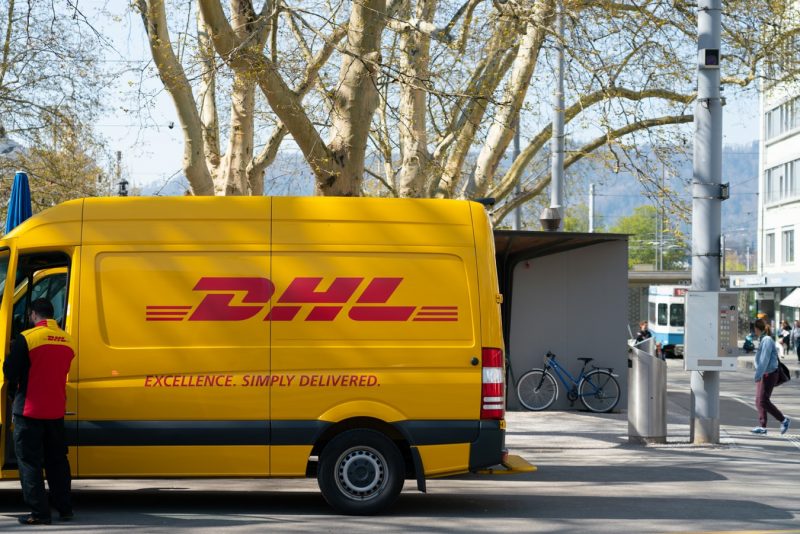
Practically any given business out there is constantly looking to expand its distribution reach. One of the ways of expanding is to look for previously unexplored international markets. And it is often the case that the barrier for such expansion has to do with adapting business processes and policies to the specifics of those foreign markets. In this post we’re trying to dive a bit deeper into the case of international business expansion by integrating international shipping carrier that is not present in the standard Acumatica offering.
Our client in this instance is a regional VAR, international reseller and integrator of Acumatica services in Germany. The goal for this project was to develop a seamless integration of Acumatica with DHL delivery service. DHL is one of the leaders in logistics and delivery, in Germany specifically and in Europe at large. Acumatrica’s standard integrations of this kind mostly cover delivery services dominant in United States, such as UPS, Fedex, and USPS. Thus such project was inevitable in European market. And because this was for existing end user who needed such functionality right away, the project timeline was aggressive. We’ve been given 2 months time to deliver the complete solution.

Lets begin
In one of the previous integration projects that we undertook with Acumatica was linking the ERP with an e-Commerce platform. Drawing from our previous experience it was clear that our plan for this project must be as follows:
- Taking existing ERP module
- Adding functionality missing for our specific needs
- Integrating aforementioned module with the API’s from DHL service
- Testing, testing again, testing again
- Deploying to UAT and going through user testing together with the client
- Deploying to production
A fly in the ointment
It turns out that DHL API’s do not support price calculations for the delivery service. To solve this unexpected issue we had to add freight calculation parameters into the Acumatica’s module and implement DHL formulas for making such calculations on the fly. Parameters would populate based on the specifics of the Sales Order. The end result of the modifications is to give any Acumatica client based in Germany an ability to calculate shipping charges of a specific order directly on the Sales order screen when using DHL delivery services. In addition, we’ve also added the ability to reflect tracking information directly from Acumatica interface which was a really nice touch, giving the end-user a truly integrated experience.
Small hiccups here and there
As it turned out, the API service from DHL was not specific enough to accomplish the needed functionality. Luckily, the development team at DHL was very responsive. Immediately after we’ve discovered the potential issue, we reached out to them and they were prompt and decisive in their responses. Shortly after the issue was brought to their attention they went to work and deficiencies were solved in a short amount of time. On the ERP side, the Acumatica’s technical team was able to provide us with a needed interface documentation to complete the integration.

Resources used on the project
Target version of the ERP for this project was Acumatica 2019 R1. Thus work was done utilizing Acumatica framework (C# .Net) and DHL API. On the side of human resources – project was accomplished by a team of 3 individuals: Solution Architect, Acumatica .Net Developer, and QA Engineer
To complete the entire set of requirements within a given timeline it is critical to build your team with professionals who are not only experts within their field, but also work well within the given team. Team dynamics is often overlooked aspect of a project-based model, more on that in a separate post that will be coming out shortly.
Our team was using kanban methodology on this project. To speed up development for an extremely tight project timeline, we had developer pretest small functionality chunks and immediately issue corrections. QA Engineer would get to test already a larger blocks of programming. The complete project’s Level of Effort (LOE) came up to 198 man hours, which includes 178 man hours for Development and QA and 20 man hours for Solution Architect.
Because of this project and experience we’ve gained on this case, we can now integrate into Acumatica any other freight service provider out there, given that it has a sufficient level of web-based API’s. If you have any questions about this article specifically, or Acumatica ERP in general, please do not hesitate to leave your comments below. We always take our time to read your comments and answer them promptly.
Logistic industry only grows and the number of delivery companies keeps growing. FedEx, Railway Express Agency, Trucking companies of the United States, United Parcel Service are the most popular in the USA with difficult workflow and overwhelming planning. That’s why nowadays, there are many ready-made specific solutions for popular delivery services. All these solutions require customization to adapt all features according to the customer’s needs and preferences. In case you want to use a few solutions at the same time, it will be faster and cheaper to develop your own ERP system. The best way to do that is by hiring an outsource team. You can read here how to choose a remote developer team.
Follow us on the Linkedin, Facebook or Twitter so as not to miss our articles about ERP!
